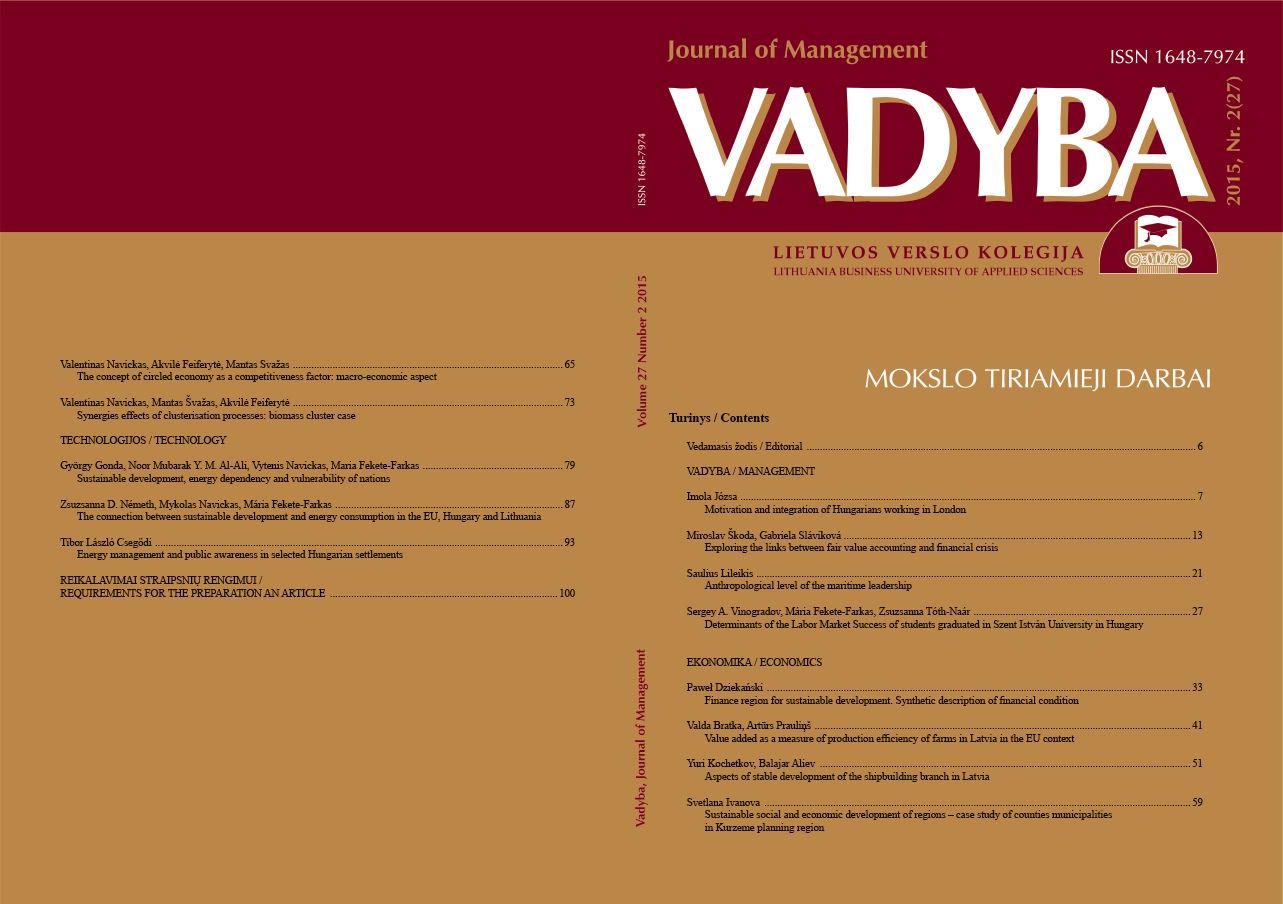VALUE ADDED AS A MEASURE OF PRODUCTION EFFICIENCY
OF FARMS IN LATVIA IN THE EU CONTEXT
VALUE ADDED AS A MEASURE OF PRODUCTION EFFICIENCY
OF FARMS IN LATVIA IN THE EU CONTEXT
Author(s): Valda Bratka, Artūrs PrauliņšSubject(s): Social Sciences, Economy
Published by: Lietuvos verslo kolegija
Keywords: value added; farms; production efficiency; Latvia
Summary/Abstract: Efficient agricultural production is not only an essential prerequisite for successful development of rural territories and food processing industry but also an important factor in providing employment and stability of national economy. The creation of high value added by agrarian sector substantially contributes to the growth of economic prosperity of rural population. This study aims to explore the efficiency of Latvian agricultural production at micro (farm) level measured by value added in the context of selected EU member states. All the calculations were performed by the authors and were based on data for the years 2007-2013 which had been obtained from the public databases of Farm Accountancy Data Network and SUDAT. An examination of the proportion of farm net value added to annual work unit has revealed that the Baltic States still belong to the lowest ratio group compared with the EU average. Latvian field crops farms were in a particularly difficult economic situation. In comparison with the EU average, the ratio of farm net value added per 1 hectare of utilized agricultural area was the smallest in the EU. In Latvian dairy farms the ratio of farm net value added per 1 livestock unit to the EU average was much higher and achieved approximately 70 %. However, it still was not as high as for farms in neigbouring Baltic countries where the ratio was roughly the same as the EU average. Latvian farms also remained among the most heavily subsidized agricultural holdings in the EU. In agrarian sector the proportion of production subsidies in farm net value added was two times higher than the EU average. A growing dependence of farms on subsidies manifests deteriorating competitiveness of agrarian sector. This trend could be reversed by introducing innovative forms of production process, modernizing technology and learning from experience of other EU member states, particularly, of Scandinavian countries which have similar or even more adverse climate.
Journal: VADYBA
- Issue Year: 27/2015
- Issue No: 2
- Page Range: 41-50
- Page Count: 10
- Language: English

